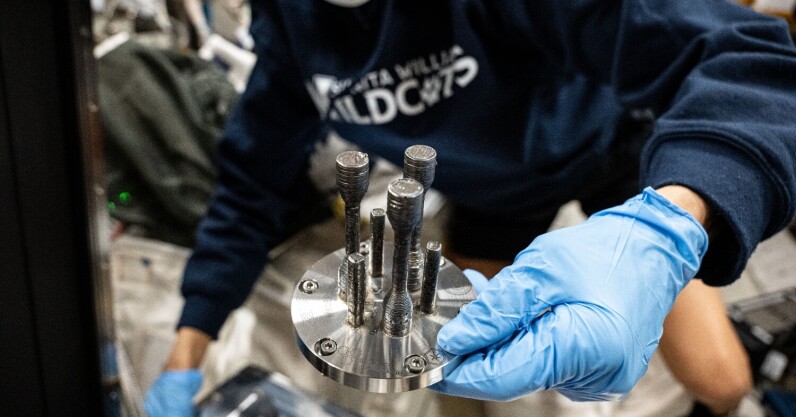Siôn Geschwindt
2024-09-06 10:49:53
thenextweb.com

Astronauts aboard the International Space Station (ISS) have used ESA’s metal 3D printer to forge the first-ever metal part made entirely in space.
The achievement was part of a collaboration between ESA and Airbus that looks to develop Europe’s capabilities in space manufacturing. It could mark a step toward greater autonomy for long-term missions to the Moon, Mars, and beyond.
“Creating spare parts, construction components, and tools on demand will be essential for long-distance and long-duration missions,” said Daniel Neuenschwander, director of human and robotic exploration at ESA.
Built by Airbus, the 180kg printer can be used to repair or manufacture tools, mounting interfaces, and mechanical parts. It can print parts with a volume of nine centimetres high and five centimetres wide, with the process lasting about 40 hours.
Launched earlier this year, the metal 3D printer was installed by ESA astronaut Andreas Mogensen in the ISS’s Columbus module. And now it has produced its first metal component in microgravity.
3D-printing metal in space
Unlike previous plastic-based 3D printing aboard the ISS, this demonstrator shows that it’s possible to create durable, high-strength parts in space. However, printing metal in space doesn’t come with challenges.
Metal 3D printers on Earth are usually the size of a small room. However, engineers at Airbus had to shrink the space printer down to the size of a washing machine so it could fit in the tight confines of the ISS. They also had to put the printer in a sealed metal safe-like box, to ensure the ISS was protected from the extreme heat produced during metal printing.
“Gravity management is also key, which is why we chose wire-based printing technology. The wire is independent of gravity unlike the powder-based system, which always has to fall to the ground,” said Sébastien Girault, metal 3D printer system engineer at Airbus, earlier this year.
Astronauts on the ISS will send the printed component, along with three others planned, to Earth for analysis at ESA’s technical centres and research facilities across Europe.
Space autonomy
As humans push farther into deep space, the ability to 3D-print essential tools, spare parts, and even whole structures could make long-duration missions more viable.
NASA and ESA, for instance, are developing 3D printing technology that uses local resources like lunar regolith for space construction, reducing the need to transport materials from Earth.
Projects such as Moonrise, led by the German Space Agency, and NASA’s Olympus aim to create entire buildings on the Moon and Mars for long-term space habitation.
In 2022, NASA awarded 3D-printing startup Icon a $57mn contract to advance construction technologies that could help build infrastructure such as landing pads, habitats, and roads on the lunar surface.
Support Techcratic
If you find value in Techcratic’s insights and articles, consider supporting us with Bitcoin. Your support helps me, as a solo operator, continue delivering high-quality content while managing all the technical aspects, from server maintenance to blog writing, future updates, and improvements. Support innovation! Thank you.
Bitcoin Address:
bc1qlszw7elx2qahjwvaryh0tkgg8y68enw30gpvge
Please verify this address before sending funds.
Bitcoin QR Code
Simply scan the QR code below to support Techcratic.

Please read the Privacy and Security Disclaimer on how Techcratic handles your support.
Disclaimer: As an Amazon Associate, Techcratic may earn from qualifying purchases.



























































![[5-Yrs Free Data Recovery] GIGASTONE 256GB SD Card, 4K Camera Pro, A1 V30 SDXC Memory…](https://techcratic.com/wp-content/uploads/2025/09/51F2IcqgHrL._AC_SL1000_-360x180.jpg)





































